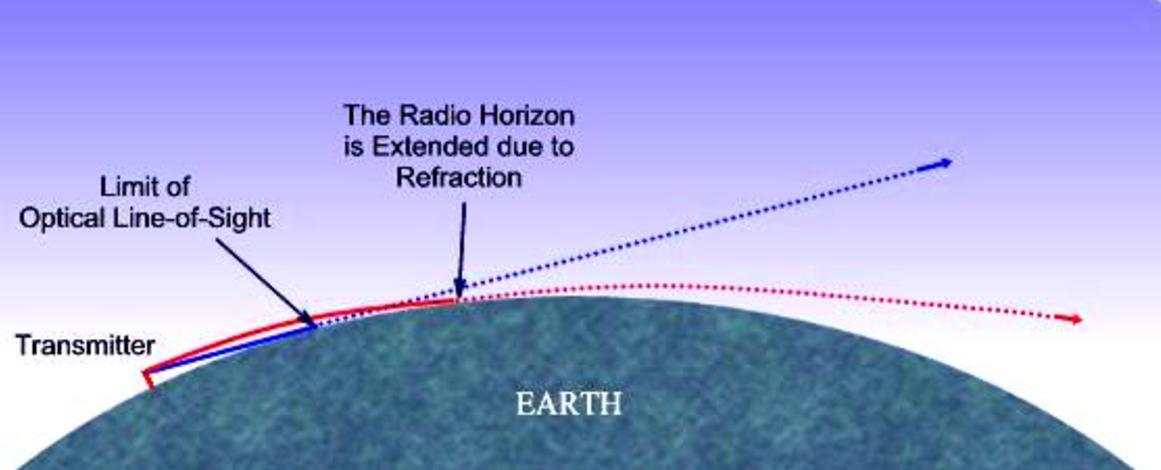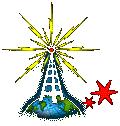
<< radio home
<< index
by disinfoniacs #69 & #1
>>>>
Ham radio operators, especially those at the Technician level, rely on various techniques to establish communication with other stations. One of the foundational techniques is line-of-sight communication, also known as "simplex." In this technique, the radio signals travel in a direct straight line between the transmitting and receiving stations.
The maximum distance at which two stations can communicate through a direct path is limited by the radio horizon. The radio horizon is the distance from which the radio signals curve away from the Earth's surface and are no longer directly receivable. Interestingly, radio waves perceive the Earth as less curved than light does. This phenomenon is due to a slight refraction of the radio waves as they pass through the atmosphere, bending them slightly around the Earth and allowing them to travel further than the visual line of sight. This property of radio waves makes it possible for VHF and UHF radio signals to travel beyond the radio horizon and establish communication over longer distances than would be possible if the signals traveled in a straight line.

Radio wave propagation can be affected by various factors that determine the range of your signal. While the ideal environment is free of obstructions and electromagnetic interferences, in reality, many factors can affect the actual reach of your signal.
One of the factors that can significantly reduce the range of microwave frequencies, typically found in the upper UHF band, is precipitation, such as rain. Raindrops can scatter and absorb radio waves, causing attenuation and signal degradation. However, radio waves on the 10- and 6-meter bands is largely unaffected by fog and light rain due to their lower frequencies and longer wavelengths.
Vegetation, such as trees and leaves, can also affect radio wave propagation. Leaves can absorb UHF and microwave signals, reducing the signal strength and range of communication. Trees and other obstructions can also cause multipath interference, where the signal bounces off and reflects from different surfaces, creating phase shifts and signal cancellation.
For line-of-sight communication, it is crucial to align the polarization of both transmitting and receiving antennas. The polarization of an antenna refers to the orientation of its electric field, which can be either vertical or horizontal. If the antennas at opposite ends of a VHF or UHF line-of-sight radio link are not using the same polarization, signals may be substantially weaker due to polarization mismatch loss.
While nature and terrain may present obstacles to ham radio, it can also be leveraged to your advantage. Reflection enables signals to travel beyond line-of-sight distances.
For example, when attempting to reach a repeater across town but hindered by a building blocking a direct signal, a directional antenna may allow you to reflect your signal off an object in the distance.
Knife-edge diffraction, a technique that bounces radio waves off a mountain or obstacle, allows radio signals to be heard despite obstructions between two stations. To circumvent an obstruction, try to find a path that reflects signals to the repeater.
An important consideration, particularly when utilizing digital signals, is to avoid reflecting off multiple objects, as data signals arriving via multiple paths tend to increase error rates.
Think beyond buildings and obstacles, let's harness the power of atmospheric reflection, also known as “skip.” To grasp this concept, it is essential to delve into the properties of two atmospheric layers—the ionosphere and the troposphere.
<< previous lesson | next lesson >>
---
<< radio home
<< index
